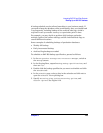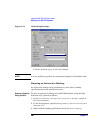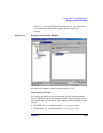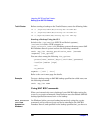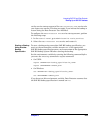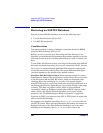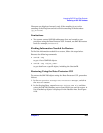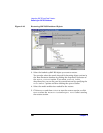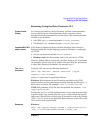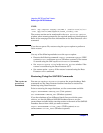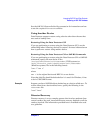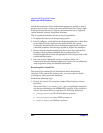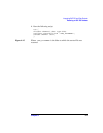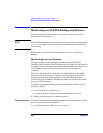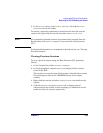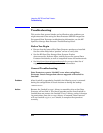
Integrating SAP R/3 and Data Protector
Restoring an SAP R/3 Database
Chapter 2 207
Restoring Using the Data Protector CLI
Cluster-Aware
Clients
In a cluster environment, the environment variable OB2BARHOSTNAME
must be defined as the virtual hostname before starting a restore
procedure from the command line (on the client). The OB2BARHOSTNAME
variable is set as follows:
• On UNIX: export OB2BARHOSTNAME=<virtual_hostname>
• On Windows: set OB2BARHOSTNAME=<virtual_hostname>
Localized SAP R/3
object names
If the names of backed up objects contain characters that cannot be
displayed using the current language group (on Windows) or code page
(on UNIX):
✓ Set the environment variable OB2_CLI_UTF8 to 1.
✓ Windows only: Set the encoding used by the terminal to UTF-8.
If not set, backup objects returned by the Data Protector CLI commands
(for example omnidb) may not be usable when providing the parameters
to other Data Protector commands (for example omnir).
The omnir
Command
Using the CLI, execute the following command:
omnir -sap <Host:Set> -session <SessionID> [-copyid
<CopyID>] -tree <FileName>
where FileName must be specified as follows:
Windows: Full pathname of the file must be specified using UNIX
syntax (slashes and not backslashes) starting with the root directory (/),
drive letter, and colon. For example: -tree /c:/oracle/log.dbf.
UNIX: Full pathname of the file must be specified. For example: -tree
/app/oracle/log.dbf.
Provide the SessionID of the backup session. If you want to restore from
a specific object copy, provide also the CopyID, which selects the specific
object copy (object mirror or object copy) to be used for restore. By default
(if the -copyid option is not specified), Data Protector selects the media
set to restore from automatically.
Examples Windows:
omnir -sap computer.company.com:ABA.0 -session 2006/01/23-1
-tree /C:/oracle/ABA/sapdata1/btabd_1/btabd_1.dat



